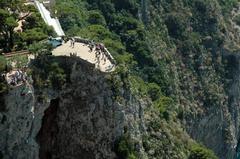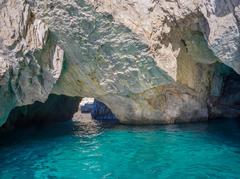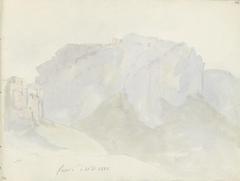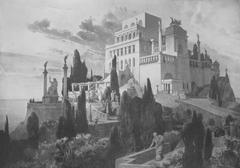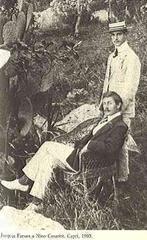
Santo Stefano Capri: Visiting Hours, Tickets, and Historical Sites Guide
Date: 04/07/2025
Introduction
Santo Stefano Church, located in the vibrant center of Capri Town, stands as a testament to the island’s rich religious heritage and Baroque architectural beauty. Built between 1688 and 1695 on the site of a former Benedictine convent, this church was once Capri’s cathedral and remains a pivotal landmark for both worship and community life. Designed by renowned architect Francesco Antonio Picchiatti and master builder Aniello Desiderio, Santo Stefano exemplifies southern Italy’s Baroque style with its Latin cross layout, dramatic vaults, and intricate interior details. Its central location near the Piazzetta makes it an essential stop for anyone seeking to immerse themselves in Capri’s history, art, and vibrant culture (Guide of Capri, Capri.net).
This detailed guide will help you plan your visit to Santo Stefano, offering insights into its history, architectural highlights, practical visitor information, nearby attractions, and tips for a rewarding experience.
Contents
- Origins and Historical Development of Santo Stefano
- Architectural and Artistic Highlights
- Visiting Santo Stefano: Hours, Tickets, and Accessibility
- Practical Travel Tips and Nearby Attractions
- Role in Local Culture and Notable Events
- Preservation and Contemporary Use
- Frequently Asked Questions (FAQ)
- Conclusion and Call to Action
Origins and Historical Development of Santo Stefano
Santo Stefano was constructed between 1688 and 1695 to replace a 16th-century church and Benedictine convent. Commissioned by local religious authorities, the church reflects the flourishing Baroque style of the period. For over a century, it served as Capri’s cathedral until the diocesan seat was transferred in the early 19th century. The adjacent archbishop’s palace, now Capri’s town hall (Municipio), highlights the close connection between religious and civic life on the island (Guide of Capri, Cherie’s Place).
Architectural and Artistic Highlights
Santo Stefano is a prime example of Neapolitan Baroque architecture. Key features include:
- Latin Cross Layout: The church features a central nave, side chapels, and a transept, topped with domes and vaults designed to create dynamic light effects.
- Exterior: Its whitewashed façade is modest compared to mainland counterparts but is enhanced by grand steps rising from the Piazzetta.
- Clock Tower: An iconic clock tower, visible from the Piazzetta, is all that remains of the original Benedictine convent (Bring You Info).
- Interior Art: The church boasts intricate stucco work, gilded wood, and a remarkable marble pavement sourced from the ancient Roman Villa Jovis, symbolizing the synthesis of Capri’s Roman and Christian histories (Capri.net).
- Altars and Chapels: The southern chapel features sculpted patrician figures, while the main altar is complemented by a silver statue of San Costanzo, Capri’s patron saint.
- Vaulted Ceilings: Decorated with stucco and subtle painted motifs, the ceilings enhance the church’s spiritual ambiance.
Visiting Santo Stefano: Hours, Tickets, and Accessibility
Visiting Hours
- Typical Hours: 9:00 AM–12:30 PM and 3:30 PM–6:30 PM daily.
- Note: Hours may shift during religious holidays or special events. Always check the latest information via the official Capri tourism website or on-site notice boards.
Tickets and Entry
- Admission: Free for all visitors. Donations are welcomed to support church upkeep.
Accessibility
- Access: The church is reached via steps from Piazza Umberto I, which may be challenging for those with mobility impairments.
- Facilities: No restrooms inside; public facilities are available nearby. Benches are provided for rest.
Photography and Behavior
- Photography: Permitted outside of religious services, but no flash or tripods. Always respect posted guidelines.
- Dress Code: Shoulders and knees must be covered; avoid beachwear and sleeveless tops. Silence is encouraged, especially during Mass.
Practical Travel Tips and Nearby Attractions
Getting There
- Location: Piazza Umberto I, Capri, Italy.
- Directions: Easily accessible on foot from the Piazzetta. Arrivals from Marina Grande can use the funicular or taxis to reach the square, followed by a short walk.
Suggested Itineraries and Nearby Sites
- Piazza Umberto I: Capri’s lively main square, ideal for coffee and people-watching.
- Palazzo Cerio: A museum opposite the church, with exhibits on Capri’s natural and social history (Capri Culture and Tourism Office).
- Gardens of Augustus: Just a seven-minute walk, these botanical gardens offer panoramic views of the Faraglioni rocks.
- Certosa di San Giacomo: A 14th-century monastery and museum, six minutes away.
- Via Camerelle: Capri’s luxury shopping street, close to the Piazzetta.
Role in Local Culture and Notable Events
Santo Stefano remains the center of religious and community life in Capri. It hosts regular Masses, weddings, funerals, and major festivals, including the feast of San Costanzo (May 14th) and Saint Stephen (December 26th), celebrated with vibrant processions and special services (Vacation Holiday Travel, Cherie’s Place). The church’s integration with civic spaces underscores its importance as both a spiritual and cultural anchor.
Preservation and Contemporary Use
Ongoing restoration projects have preserved Santo Stefano’s Baroque character, with careful maintenance of its wooden entrance doors and marble details. The church’s status as Capri’s main parish ensures active use and continued conservation for future generations (Capri.net).
Frequently Asked Questions (FAQ)
Q: What are Santo Stefano’s visiting hours?
A: Typically 9:00 AM–12:30 PM and 3:30 PM–6:30 PM, but hours may vary on holidays or during special events.
Q: Is there an admission fee?
A: No, entry is free. Donations are appreciated.
Q: Is the church accessible for people with mobility impairments?
A: Access involves steps; those with mobility issues may need assistance.
Q: Are guided tours available?
A: While the church itself does not offer official tours, it is included in many Capri walking tours and self-guided app-based tours (GPSmyCity).
Q: Can I take photographs inside?
A: Discreet photography is allowed outside services; avoid flash and respect signage.
Contact Information
For up-to-date information on visiting hours, events, and accessibility:
- Capri Culture and Tourism Office
- Email: [email protected]
- Phone: +39 353 4523908
Additional Resources
- Guide of Capri – Chiesa di Santo Stefano
- Official Capri Tourism Website
- GPSmyCity Walking Tours
- Bring You Info
- Naples Wise
Visuals and Media
Enhance your visit with:
- Images of the church’s façade, domes, and interior altars (add alt tags such as “Santo Stefano Capri church exterior” or “Baroque altar inside Santo Stefano”).
- An interactive map of the Piazzetta area.
- Virtual tours from the Guide of Capri website.
Internal Links
Explore more on Capri’s historical sites:
Conclusion and Call to Action
Santo Stefano is a must-see for any visitor to Capri, offering a blend of historical depth, architectural elegance, and spiritual atmosphere. Its central location, free entry, and proximity to other major attractions make it an ideal starting point for exploring Capri’s rich cultural tapestry. For the best experience, plan your visit around the church’s hours, observe the dress code, and consider joining a guided tour or using a self-guided app.
Before your trip, check the latest information with the Capri Culture and Tourism Office or Guide of Capri. For more travel guides, download the Audiala app and follow us on social media for up-to-date tips and exclusive content.
Sources
- Santo Stefano Church in Capri: History, Visiting Hours, Tickets, and Travel Tips, 2025, Guide of Capri
- Chiesa di Santo Stefano Visiting Guide: Architecture, Art, and Practical Tips for Visitors, 2025, Capri.net
- Chiesa di Santo Stefano Capri: Visiting Hours, Tickets & Historical Guide, 2025, Cherie’s Place
- Santo Stefano Visiting Hours, Tickets & Guide to Capri’s Historic Church, 2025, Capri Culture and Tourism Office
- Naples Wise, Our Essential Guide to Visiting the Stunning Island of Capri, 2025
- Bring You Info
- GPSmyCity Walking Tours
- Vacation Holiday Travel


